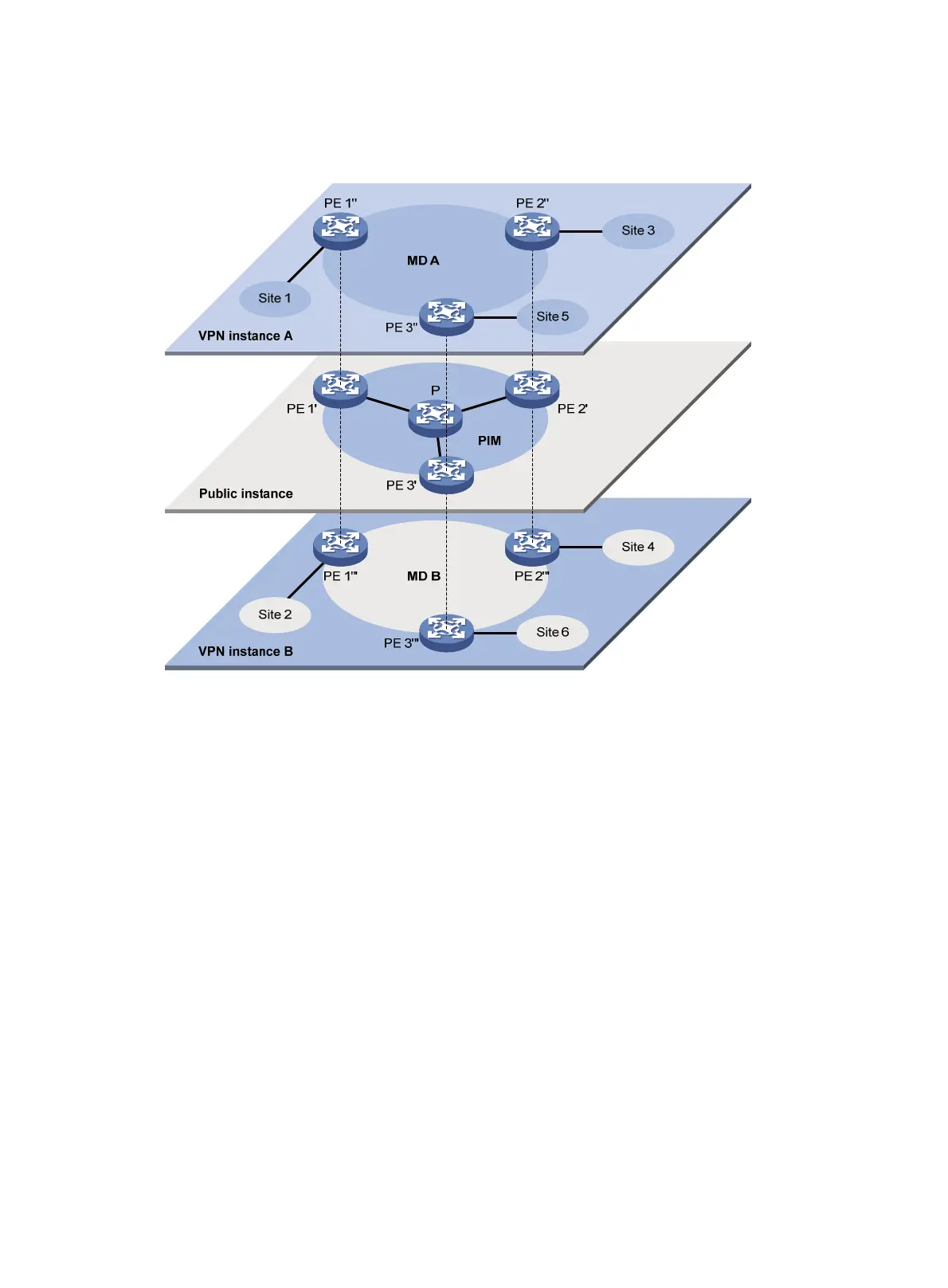172
can consider these instances on PE 1 to be independent virtual devices, which are PE 1', PE 1", and PE
1'". Each virtual device works on a plane, as shown in Figure 57.
Figure 57 Multicast in multiple VPN instances
Through multicast VPN, multicast data of VPN A for a multicast group can arrive at only receiver hosts in
Site 1, Site 3, and Site 5 of VPN A. The stream is multicast in these sites and on the public network.
The prerequisites for implementing multicast VPN are as follows:
1. Within each site, multicast for a single VPN instance is supported.
2. On the public network, multicast for the public network is supported.
3. The PE devices support multiple VPN instances as follows:
{ Connecting with different sites through VPN instances and supporting multicast for each VPN
instance.
{ Connecting with the public network and supporting multicast for the public network.
{ Supporting information exchange and data conversion between the public network and VPNs.
The device implements multicast VPN by using the multicast domain (MD) method. This multicast VPN
implementation is referred to as MD-VPN.
The most significant advantage of MD-VPN is that it requires only the PE devices to support multiple VPN
instances. It is not necessary to upgrade CE devices or P devices, or to change their original PIM
configurations. The MD-VPN solution is transparent to CE devices and P devices.
MD-VPN overview
The basic MD-VPN concepts are described in Table 16.

